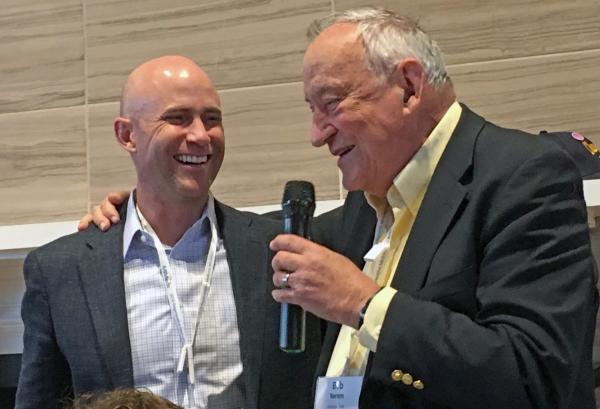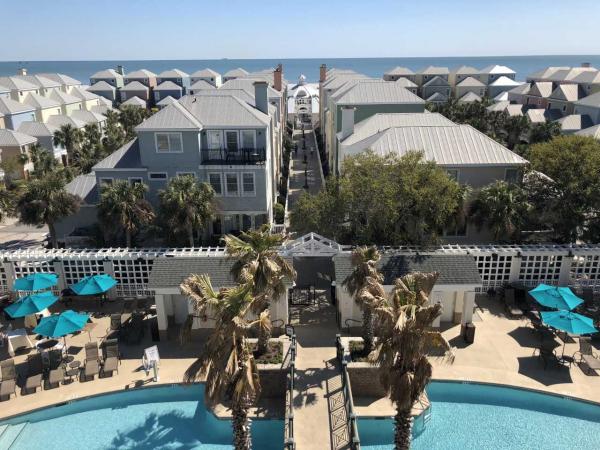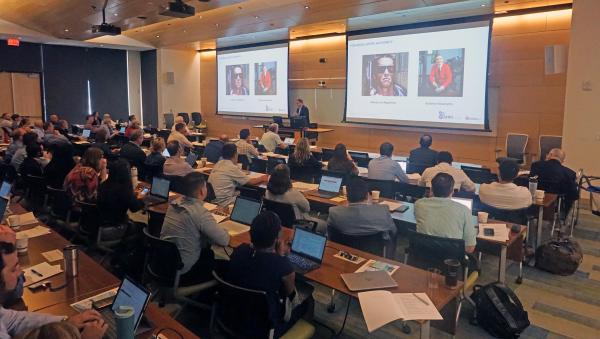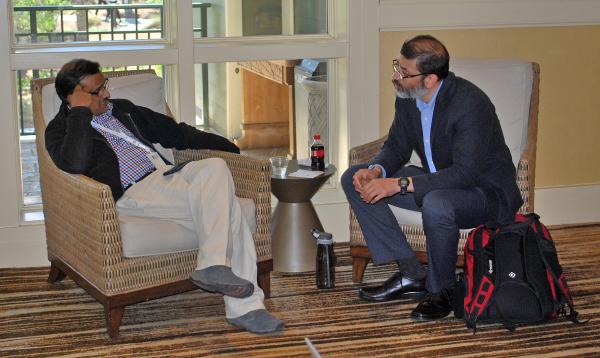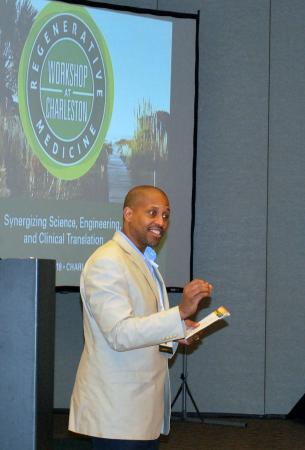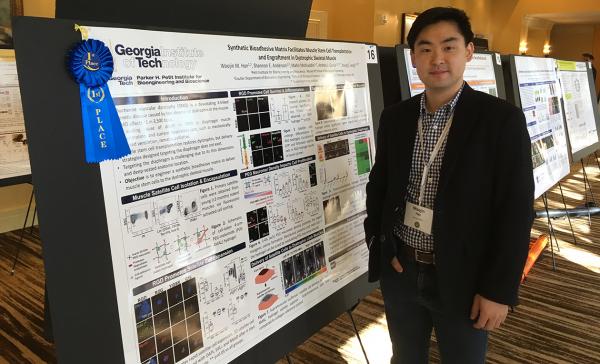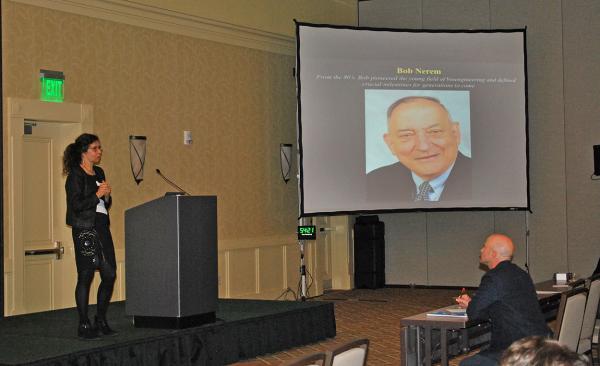This year marked the beginning of one era and the end of another for the Regenerative Medicine Workshop, which wrapped up its 22nd edition on Saturday. For the first time, the workshop was held somewhere other than Hilton Head.
This year, more than 200 engineers, scientists, clinicians, and industry partners from across the planet gathered for the first time at Wild Dunes on Isle of Palms, just north of Charleston. And this year, Bob Guldberg presided over the workshop for the last time, at least for the foreseeable future.
Guldberg, executive director of the Petit Institute for Bioengineering and Bioscience at the Georgia Institute of Technology (the organizing body that launched the workshop in 1997), will begin a new post as vice president and the inaugural director of the Knight Campus for Accelerating Scientific Impact at the University of Oregon in August.
“Each year I wonder how we can possibly top the previous year’s workshop,” says Guldberg. “But this one was special. I’ve been coming to the Regenerative Medicine Workshop since it started. So this has not only been a place to showcase cutting edge research in regenerative medicine through the years. It’s been a community for me and my family. But I’m excited for the future of the workshop in a new location, and look forward to coming back as a participant in coming years.”
In fact, while other hands will guide the event next year, Guldberg is still expected to participate. So says Bob Nerem, founding director of the Petit Institute, who recruited Guldberg to Georgia Tech more than 20 years ago.
“Bob, let me assure you that even though you’re leaving Georgia Tech, and even though you’re not affiliated with the organizing partners of this workshop – you’re way out there in Oregon – we still expect to get work out of you,” Nerem quipped to a jovial crowded room during the conference dinner Friday night. Then he added, “so, Bob, from your friends, thank you for all you’ve done, and for your leadership in moving this workshop forward.”
This year’s workshop, branded ‘Synergizing Science, Engineering, and Clinical Translation,’ drew representatives and researchers (principal investigators, postdocs, and students) from more than two dozen universities and other institutions, including the organizing partners: the Regenerative Engineering and Medicine (REM) research center (a partnership of Georgia Tech, Emory University, and the University of Georgia), the Stem Cell and Regenerative Medicine Center at the University of Wisconsin-Madison, the Mayo Clinic’s Center for Regenerative Medicine as well as its Rehabilitation Medicine Research Center, and the McGowan Institute for Regenerative Medicine at the University of Pittsburgh.
Other partners/sponsors included the Advanced Regenerative Manufacturing Institute (ARMI), Biofabusa, MiMedx, WiCell, Biological Industries USA, ACell, and BioSpherix, Ltd.
Beginning on Wednesday (March 21) with a series of late afternoon presentations, the Sweetgrass Pavilion Conference Center at Wild Dunes was packed hour after hour over the next several days for keynote presentations, as well as other research, including rapid fire sessions for students and other trainees. The highlight on Thursday was a poster session and competition for trainees, won by Georgia Tech postdoc Woojin Han (who is co-advised by Petit Institute researchers Andrés J. García and Young Jang).
An annual highlight of the workshop has always been the Nerem Lecture, an hour long presentation by one of the world’s thought leaders in a particular field. This year it was delivered by Viola Vogel, professor and chair of the Department of Health Science and Technology and principal investigator of the Laboratory of Applied Mechanobiology at the ETH Zürich, Switzerland.
Her presentation was entitled, “Unraveling the Secrets of How the Mechanobiology of Extracellular Matrix Regulates Cell and Tissue Functions,” but she devoted a portion of her talk broadly to the origins of the field of bioengineering itself. Coming from a background in physics, Vogel leapt into bioengineering in 1990 at the University of Washington, where she became founding director of the Center for Nanotechnology before moving to Switzerland in 2004.
Alluding to something Nerem said years ago, Vogel stressed, “how important it is for people to move from different disciplines into this field of bioengineering.”
Early on, as bioengineering was maturing from its infancy, she noted that engineers had a difficult time understanding, “the biology, the physiology, so they didn’t always pick the right questions to pursue. But I think what we’re seeing now is a younger generation that was educated with two backgrounds, the science and the engineering, and you’re seeing it in the presentations, in how they pick which problems to address, in how they package what they are doing, and that is absolutely crucial for this field to advance.”
There were 50 research presentations over the four-day workshop, including a wide range shared by this new generation of biomedical researchers. The talks covered such timely topics as immunotherapies, cell manufacturing, engineered hydrogels, DNA barcoding, and organoid model systems and many others.
So once again, it was a lot of deep diving along the Atlantic coast, into regenerative strategies to improve the human condition. And Guldberg, for one, came from the workshop encouraged and energized.
“The field of regenerative medicine is moving so rapidly both in terms of the science and progress towards therapies that are having a remarkable impact on patients with cancer, degenerative conditions, and traumatic injuries,” Guldberg says. “I love this workshop and look forward to continuing to come each year, because it is the premier meeting to hear the latest progress in regenerative medicine.”
Media Contact
Jerry Grillo
Communications Officer II
Parker H. Petit Institute for
Bioengineering and Bioscience
Keywords
Latest BME News
Jo honored for his impact on science and mentorship
The department rises to the top in biomedical engineering programs for undergraduate education.
Commercialization program in Coulter BME announces project teams who will receive support to get their research to market.
Courses in the Wallace H. Coulter Department of Biomedical Engineering are being reformatted to incorporate AI and machine learning so students are prepared for a data-driven biotech sector.
Influenced by her mother's journey in engineering, Sriya Surapaneni hopes to inspire other young women in the field.
Coulter BME Professor Earns Tenure, Eyes Future of Innovation in Health and Medicine
The grant will fund the development of cutting-edge technology that could detect colorectal cancer through a simple breath test
The surgical support device landed Coulter BME its 4th consecutive win for the College of Engineering competition.

